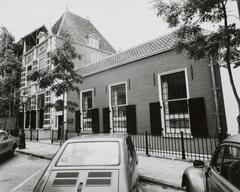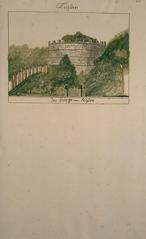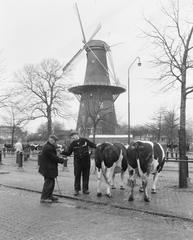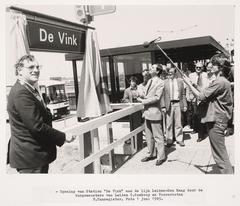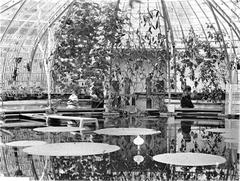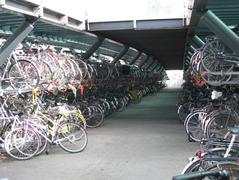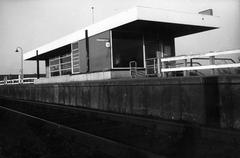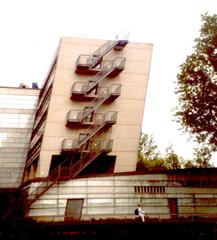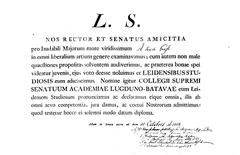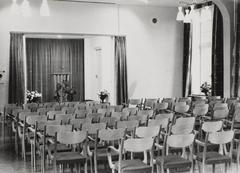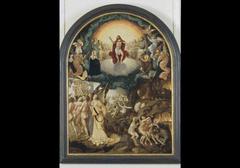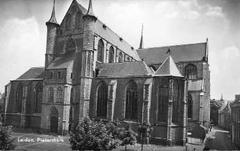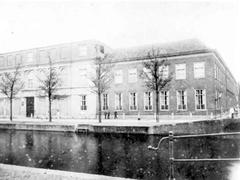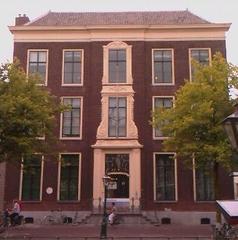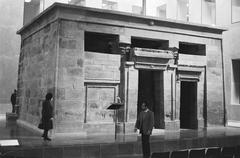Zijlpoortsbrug Visiting Hours, Tickets, and Comprehensive Guide to Leiden’s Historic Canal Bridge
Date: 04/07/2025
Introduction
The Zijlpoortsbrug, located beside the stately Zijlpoort city gate in Leiden, stands as a testament to Dutch heritage, urban planning, and architectural ingenuity. Since its construction in the 17th century, this bridge has played a crucial role in linking Leiden’s waterways with its vibrant neighborhoods, serving both as a functional crossing and as a powerful symbol of the city’s evolving identity. Today, the bridge is a beloved monument, seamlessly blending centuries of history with contemporary urban life. This guide provides in-depth historical context, practical visitor information, and recommendations for exploring both the Zijlpoortsbrug and the broader landscape of Leiden’s remarkable historical sites.
Table of Contents
- Introduction
- Historical Overview and Architectural Evolution
- Visitor Information
- Nearby Attractions and Cultural Sites
- The Bridge’s Significance in Leiden’s Urban Fabric
- Frequently Asked Questions (FAQs)
- Conclusion and Travel Tips
- References and Further Reading
Historical Overview and Architectural Evolution
Origins and Urban Context
The Zijlpoortsbrug owes its existence to the strategic importance of the Zijlpoort, constructed in 1667 by architect Willem van der Helm and adorned by sculptor Rombout Verhulst (nl.wikipedia.org). Positioned where the Oude Rijn enters the city, the gate and bridge replaced the older Oude Zijlpoort, serving dual purposes as a defensive structure and a commercial gateway. The earliest bridges at this spot were simple wooden structures, vital for connecting Leiden’s bustling city center with its northern hinterland during the Dutch Golden Age (Leiden Tourism).
Architectural Transformations (17th–20th Century)
17th to 19th Century Foundations
The bridge was originally constructed with both wood and stone—stone arches for lasting support and wooden superstructures for easier maintenance (dudok.org). The Zijlpoort’s upper hall, meanwhile, served various civic roles, from hosting literary gatherings to providing schooling for local youth (nl.wikipedia.org).
Early 20th Century Modernization
Between 1913 and 1915, renowned architect Willem Marinus Dudok introduced a new wooden superstructure, using vibrant colors to modernize the bridge while respecting its historical context (dudok.org). By 1930, increased traffic demands led to the replacement of the wooden section with an iron structure.
Late 20th Century to Present
The bridge and gate were designated national monuments in 1968, ensuring their preservation (nl.wikipedia.org). The current movable iron bridge, periodically opened for boat passage, demonstrates a successful balance of heritage conservation and urban utility (sleutelstad.nl).
Visitor Information
Visiting Hours and Ticketing
- Zijlpoortsbrug: Open to the public 24 hours a day, year-round. No ticket or entrance fee is required (Rijksmonumenten).
- Zijlpoort (Cultural Venue): Open during special events and exhibitions, typically Tuesday through Sunday, 11:00 AM–5:00 PM. Some events are free; others may charge €5–€12 (Zijlpoort website).
Temporary closures may occur for maintenance or bridge operations; announcements are posted by the municipality (Gemeente Leiden).
Accessibility
- Pedestrians & Cyclists: Both are welcome on the bridge; gently sloped approaches and a level deck ensure ease of passage.
- Wheelchair Access: The bridge and nearby paths are accessible, though some cobblestone areas may be uneven.
- Bicycle Facilities: Ample parking is available nearby; cyclists should dismount during busy periods.
Directions and Transportation
- From Leiden Centraal Station: Approximately a 10–15 minute walk or a 5-minute bike ride.
- By Public Transit: Local buses and trams stop near the Zijlpoort.
- By Car: Use central parking garages such as Haarlemmerstraat; check for availability in advance (Gemeente Leiden).
Guided Tours and Events
- Tours: Zijlpoortsbrug is included in many city walking, cycling, and canal tours; these provide insight into Leiden’s history and architecture (visitleiden.nl).
- Festivals: The area comes alive during events like Leidens Ontzet (October 3rd) and summer festivals, with markets, music, and parades (Leiden Festival Info).
Photography Tips
- Best Times: Early morning and late afternoon (“golden hour”) provide optimal lighting and fewer crowds.
- Subjects: Capture the colorful bridge, the historic Zijlpoort, canal views, and reflections.
Nearby Attractions and Cultural Sites
- Zijlpoort: Majestic 17th-century gate and current cultural venue (Wikipedia - Zijlpoort).
- Leiden Canal System: Explore by boat for unique perspectives (DutchReview - Boat Tours).
- Het Plantsoen Park: Tranquil 19th-century English-style park nearby.
- The Burcht van Leiden: 11th-century hilltop fortification with panoramic views (DutchReview - Burcht van Leiden).
- Hortus Botanicus Leiden: The Netherlands’ oldest botanical garden (DutchReview - Hortus Botanicus).
- Museums: Rijksmuseum van Oudheden, Museum De Lakenhal, Young Rembrandt Studio, Leiden American Pilgrim Museum (Tourist Places Guide; Dreams Abroad).
- Historic Hofjes: Discover hidden courtyards for a peaceful retreat (DutchReview - Hofjes).
The Bridge’s Significance in Leiden’s Urban Fabric
Zijlpoortsbrug is not merely a means of crossing the canal; it is a living symbol of Leiden’s adaptability, resilience, and enduring connection to its waterways. The bridge has witnessed centuries of change—from bustling Golden Age commerce to modern-day festivals—and continues to serve as a gathering space, cultural waypoint, and popular subject for artists and photographers (visitleiden.org; travellifebalance.com).
Its vibrant contemporary design, blending historical brick arches with colorful modern superstructures, reflects Leiden’s commitment to celebrating heritage while embracing innovation and urban sustainability (dudok.org).
Frequently Asked Questions (FAQs)
Q: Is there a ticket or entrance fee to visit Zijlpoortsbrug?
A: No, the bridge is open to the public 24/7 and is free to cross.
Q: Are guided tours available?
A: Yes, many city walking, cycling, and canal tours include the Zijlpoortsbrug area (visitleiden.nl).
Q: Is Zijlpoortsbrug accessible for wheelchairs and bicycles?
A: Yes, the bridge and approaches are accessible, though some nearby cobblestones may be uneven.
Q: What are the best times for photography?
A: Early morning and late afternoon provide the best lighting and fewer crowds.
Q: Can boats pass under the bridge?
A: Yes, the bridge is movable and periodically opened to allow boat passage (sleutelstad.nl).
Conclusion and Travel Tips
A visit to Zijlpoortsbrug offers a unique window into Leiden’s rich tapestry of history, culture, and urban vitality. Whether you are an architecture enthusiast, a photographer, or a casual traveler, this iconic bridge offers both a literal and figurative gateway to exploring the best of Leiden. Take advantage of the city’s extensive cycling and pedestrian networks, explore nearby museums and parks, and participate in local festivals to fully immerse yourself in the Leiden experience.
To enhance your visit, download the Audiala app for guided audio tours, consult official tourism websites for up-to-date events and maintenance information, and always check current accessibility updates before you arrive.
References and Further Reading
- nl.wikipedia.org
- dudok.org
- sleutelstad.nl
- visitleiden.nl
- visitleiden.org
- leidenheritage.nl
- rijksmonumenten.nl
- dutchreview.com
- discoverwalks.com
- leiden.nl
- Tourist Places Guide
- Dreams Abroad
- Leiden Festival Info
- Gemeente Leiden
